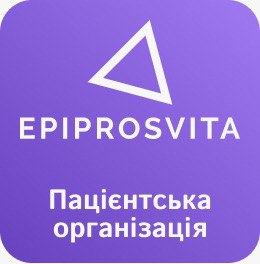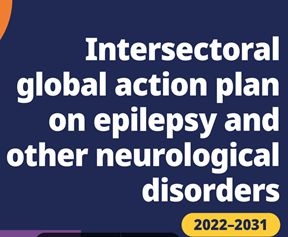Маркус Ройбер, доктор медичних наук, професор, Академічне відділення неврології, університет Шеффілда, Королівська лікарня Халламшира, Glossop Road, Sheffield, S10 2JF
Сьогодні загальновизнано, що вплив вальпроату натрію на немовлят в утробі матері може спричинити не лише серйозні вади розвитку, які можна виявити при народженні, що, ймовірно, є наслідком тератогенного впливу на ранніх стадіях вагітності, але й менш помітні порушення розвитку мозку, які проявляються у вигляді незначного дефіциту когнітивних або соціальних функцій у подальшому житті (1). Однак шлях від відкриття протинападових властивостей препарату до реалізації політики щодо зниження ризику внутрішньоутробного впливу вальпроату був довгим: вальпроєва кислота була вперше синтезована в 1882 році, але її ефекти, що пригнічують напади, були виявлені тільки завдяки щасливому випадку в 1963 році (2). Вальпроат був вперше схвалений для лікування епілепсії у Франції в 1967 році, а перше контрольоване дослідження довело його ефективність у 1975 році (3). Про дозозалежний ризик серйозних вад розвитку у немовлят, які зазнали впливу вальпроату в утробі матері, було вперше повідомлено на початку 1980-х років (4). Хоча зв'язок між внутрішньоматковою експозицією вальпроатів, зниженням вербального IQ та підвищеним ризиком поведінкових проблем у дітей був вперше описаний у 2004 році (5), лише у 2018 році Європейське агентство з лікарських засобів рекомендувало застосовувати вальпроати жінкам дітородного віку, якщо їхня епілепсія не реагує на інші АЕП, і якщо вони беруть участь у програмі запобігання вагітності (1).
Наразі регуляторні органи розглядають питання про те, чи повинні вони швидше реагувати на подібні занепокоєння щодо топірамату. Топірамат був вперше синтезований у 1979 році. Його протинападовий потенціал був припущений завдяки його хімічній структурі та багатообіцяючим результатам в обмежених експериментах на тваринах, і його розробка як ППН розпочалася в 1986 році. Великого комерційного успіху він набув після того, як отримав схвалення FDA у 1996 році. (6). Однак до 2008 року реєстри вагітності визначили топірамат як ймовірну причину вроджених вад розвитку (особливо розщеплення піднебіння) (7), а до 2014 року було продемонстровано зв'язок зі зниженою вагою при народженні. (8).
Мій вибір як редактора з поточного журналу «Seizure» - це когортне дослідження 28 дітей, які зазнали впливу топірамату внутрішньоутробно, зафіксоване в британському реєстрі вагітності. (9). У цьому дослідженні Rebecca Knight та її колег опитали матерів про їхніх дітей віком від 2,5 до 17 років на момент оцінки. Шестеро дітей, які отримували топірамат, народилися малими для свого гестаційного віку, і чотирьом з них було поставлено діагноз "розлад аутистичного спектру" (значно більше, ніж очікувалося, враховуючи фоновий показник поширеності у Великобританії близько 1%). Були виявлені значні зв'язки між вагою при народженні, дозою топірамату та оцінкою за шкалою адаптивної поведінки Вайнланда - третє видання (VABS-III).
Дослідження Knight et al. доповнює нещодавні дані двох інших досліджень, які вказують на зв'язок між топіраматом і розладами нейророзвитку: популяційного дослідження медичних записів у скандинавських країнах, яке продемонструвало підвищений ризик розладів аутистичного спектру (10), і попереднього когортного дослідження, яке вказує на підвищений ризик порушення здатності до навчання серед дітей, які приймали топірамат (n=27) (11). Хоча підтвердження цих даних було б бажаним, цілком можливо, що незабаром топірамат приєднається до вальпроату як ППН, які не слід застосовувати під час вагітності, якщо є можливість альтернативного лікування.
Література
- Davies P, Reuber M, Grunewald R, Howell S, Dickson J, Dennis G, Shanmugarajah P, Tsironis T, Brockington A. The impact and challenges of the 2018 MHRA statement on the use of sodium valproate in women of childbearing age during the first year of implementation, in a UK epilepsy centre. Seizure 2020;79:8-13.
- López-Muñoz F, Baumeister AA, Hawkins MF, Alamo C. The role of serendipity in the discovery of the clinical effects of psychotropic drugs: beyond of the myth. Actas Esp Psiquiatr 2012;40:34-42.
- Richens A, Ahmad S. Controlled trial of sodium valproate in severe epilepsy. Br Med J 1975;4(5991):255-6.
- DiLiberti JH, Farndon PA, Dennis NR, Curry CJ. The fetal valproate syndrome. Am J Med Genet 1984;19:473-81.
- Adab N, Kini U, Vinten J, Ayres J, Baker G, Clayton-Smith J, Coyle H, Fryer A, Gorry J, Gregg J, Mawer G, Nicolaides P, Pickering L, Tunnicliffe L, Chadwick DW. The longer term outcome of children born to mothers with epilepsy. J Neurol Neurosurg Psychiatry 2004;75:1575-83.
- Maryanoff BE. Phenotypic Assessment and the Discovery of Topiramate. ACS Med Chem Lett 2016;7:662-5.
- Hunt S, Russell A, Smithson WH, Parsons L, Robertson I, Waddell R, Irwin B, Morrison PJ, Morrow J, Craig J; UK Epilepsy and Pregnancy Register. Topiramate in pregnancy: preliminary experience from the UK Epilepsy and Pregnancy Register. Neurology 2008;71:272-6.
- Veiby G, Daltveit AK, Engelsen BA, Gilhus NE. Fetal growth restriction and birth defects with newer and older antiepileptic drugs during pregnancy. J Neurol 2014;261:579-88.
- Knight R, Craig J, Irwin B, Wittkowski A, Bromley RL. Adaptive behaviour in children exposed to topiramate in the womb: an observational cohort study. Seizure 2023, please add bibliographic details.
- Bjørk MH, Zoega H, Leinonen MK, Cohen JM, Dreier JW, Furu K, Gilhus NE, Gissler M, Hálfdánarson Ó, Igland J, Sun Y, Tomson T, Alvestad S, Christensen J. Association of Prenatal Exposure to Antiseizure Medication With Risk of Autism and Intellectual Disability. JAMA Neurol. 2022 Jul 1;79(7):672-681.
- Bech LF, Polcwiartek C, Kragholm K, Andersen MP, Rohde C, Torp-Pedersen C, Nielsen J, Hagstrøm S. In utero exposure to antiepileptic drugs is associated with learning disabilities among offspring. J Neurol Neurosurg Psychiatry 2018;89:1324-1331.
Markus Reuber MD PhD, Academic Neurology Unit, University of Sheffield, Royal Hallamshire Hospital, Glossop Road, Sheffield, S10 2JF
It is now well-recognised that the exposure of babies to sodium valproate in the womb may not only cause major malformations, detectable at birth, that are likely to result from teratogenic effects in the early parts of pregnancy but also more subtle abnormalities of brain development manifesting as slight deficits of cognitive or social functioning in later life (1). However, the journey from the discovery of the antiseizure properties of the drug to the implementation of policies to reduce the risk of in-utero exposure to valproate has been a long one: Valproic acid was first synthetised in 1882, but its seizure suppressing effects were only discovered by serendipity in 1963 (2). Valproate was first approved for the treatment of epilepsy in France in 1967, with a first controlled trial proving its effectiveness in 1975 (3). A dose-dependent risk of major malformations in babies exposed to valproate in the womb was initially reported in the early 1980s (4). Although the link between intra-uterine valproate exposure, a reduction in verbal IQ and increased risk of behavioural problems in children was first described in 2004 (5), it was not until 2018 that the European Medicines Agency recommended that valproate should only be used in women of childbearing age if their epilepsy has not responded to other ASMs, and if they are enrolled in a pregnancy prevention programme (1).
Regulatory agencies are currently considering whether they should respond more quickly to similar concerns about topiramate. Topiramate was first synthesised in 1979. Its anticonvulsant potential was surmised because of its chemical structure and promising results in limited animal experiments, and its development as an ASM started in 1986. It became a great commercial success after it had received FDA approval in 1996 (6). However, by 2008, pregnancy registers had identified topiramate as a likely cause of congenital malformations (especially cleft palate) (7), and by 2014 a link with reduced birth weight had been demonstrated (8).
My editor’s choice from the current volume of Seizure, is a cohort study of 28 children whose exposure to topiramate in utero had been captured by the UK pregnancy register (9). In this study Rebecca Knight and her collaborators interviewed mothers about their children aged 2.5 to 17 at the time of assessment. Six topiramate-exposed children were born small for gestational age, and four had been diagnosed with Autism Spectrum Disorder (considerably more than expected, given a UK background prevalence rate of about 1%). Significant associations were observed between birthweight, topiramate dose and Vineland Adaptive Behaviour Scale-Third Edition (VABS-III) assessment scores.
The study by Knight et al adds to recent evidence from two other studies suggesting a link between topiramate and neurodevelopmental disorders: a population-based healthcare records study from the Nordic countries demonstrating an increased risk of autistic spectrum disorder (10) and a previous cohort study indicating an increased risk of learning disability among topiramate-exposed children (n= 27) (11). While confirmation of these findings would be desirable, it may well be that topiramate will soon join valproate as an ASM which should not be used in pregnancy if alternative treatment is possible.
References
- Davies P, Reuber M, Grunewald R, Howell S, Dickson J, Dennis G, Shanmugarajah P, Tsironis T, Brockington A. The impact and challenges of the 2018 MHRA statement on the use of sodium valproate in women of childbearing age during the first year of implementation, in a UK epilepsy centre. Seizure 2020;79:8-13.
- López-Muñoz F, Baumeister AA, Hawkins MF, Alamo C. The role of serendipity in the discovery of the clinical effects of psychotropic drugs: beyond of the myth. Actas Esp Psiquiatr 2012;40:34-42.
- Richens A, Ahmad S. Controlled trial of sodium valproate in severe epilepsy. Br Med J 1975;4(5991):255-6.
- DiLiberti JH, Farndon PA, Dennis NR, Curry CJ. The fetal valproate syndrome. Am J Med Genet 1984;19:473-81.
- Adab N, Kini U, Vinten J, Ayres J, Baker G, Clayton-Smith J, Coyle H, Fryer A, Gorry J, Gregg J, Mawer G, Nicolaides P, Pickering L, Tunnicliffe L, Chadwick DW. The longer term outcome of children born to mothers with epilepsy. J Neurol Neurosurg Psychiatry 2004;75:1575-83.
- Maryanoff BE. Phenotypic Assessment and the Discovery of Topiramate. ACS Med Chem Lett 2016;7:662-5.
- Hunt S, Russell A, Smithson WH, Parsons L, Robertson I, Waddell R, Irwin B, Morrison PJ, Morrow J, Craig J; UK Epilepsy and Pregnancy Register. Topiramate in pregnancy: preliminary experience from the UK Epilepsy and Pregnancy Register. Neurology 2008;71:272-6.
- Veiby G, Daltveit AK, Engelsen BA, Gilhus NE. Fetal growth restriction and birth defects with newer and older antiepileptic drugs during pregnancy. J Neurol 2014;261:579-88.
- Knight R, Craig J, Irwin B, Wittkowski A, Bromley RL. Adaptive behaviour in children exposed to topiramate in the womb: an observational cohort study. Seizure 2023, please add bibliographic details.
- Bjørk MH, Zoega H, Leinonen MK, Cohen JM, Dreier JW, Furu K, Gilhus NE, Gissler M, Hálfdánarson Ó, Igland J, Sun Y, Tomson T, Alvestad S, Christensen J. Association of Prenatal Exposure to Antiseizure Medication With Risk of Autism and Intellectual Disability. JAMA Neurol. 2022 Jul 1;79(7):672-681.
- Bech LF, Polcwiartek C, Kragholm K, Andersen MP, Rohde C, Torp-Pedersen C, Nielsen J, Hagstrøm S. In utero exposure to antiepileptic drugs is associated with learning disabilities among offspring. J Neurol Neurosurg Psychiatry 2018;89:1324-1331.





